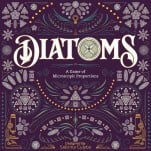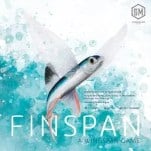Co-op Card Game Beasts Just Doesn’t Stand Out

Beasts is a new cooperative, low-communication game from Clarence Simpson, designer of The Wolves and Merchants of Magick, in a similar vein to The Game and The Mind. It’s a little more involved than either of those two, which succeeded on their simplicity (despite the former’s SEO-unfriendly name… it reminds me of the short-lived British rock band The Music), and ultimately I don’t think it’s as good as The Mind is, instead serving as a sort of diversion if you’re looking for something new and different in that space.
In Beasts, players will try to work through a deck of cards numbered 1 through 9 in eight different suits, which the game represents as the four suits from a regular deck of cards in whole and ‘broken’ varieties. There are also Beast cards in the deck, four in the basic game, which you draw randomly from the eight in the box—one per suit—and which, when they appear, will block you from playing cards of that suit to the column where they land. The goal is to play the entire deck and your hand cards without getting to a point where a player can’t make a legal play. You can never tell other players what cards you have in your hand, although you can give general clues, like saying you’re going to have to play to the hundreds column on your next turn.
On your turn, you declare any of the four suits (broken and whole don’t matter here), and then play all of the cards in your hand matching that suit. There are three piles on the table that show the hundreds, tens, and ones places of a three-digit number, which starts as 0-0-0. Every card you play must result in a three-digit number that is higher than the one that was there before, so if the number showing is 143 and you want to play a 2, you would have to play it to the hundreds column to make 243, because 123 and 142 would be lower than the number that was already there. If you play a card to the tens column, you can discard all of the cards in the ones pile, resetting that to zero; if you play a card to the hundreds column, you can discard all of the cards in the ones pile and/or in the tens pile.

-

-

-

-

-

-

-

-

-

-

-

-

-

-

-

-

-

-

-

-

-

-

-

-

-

-

-

-




























